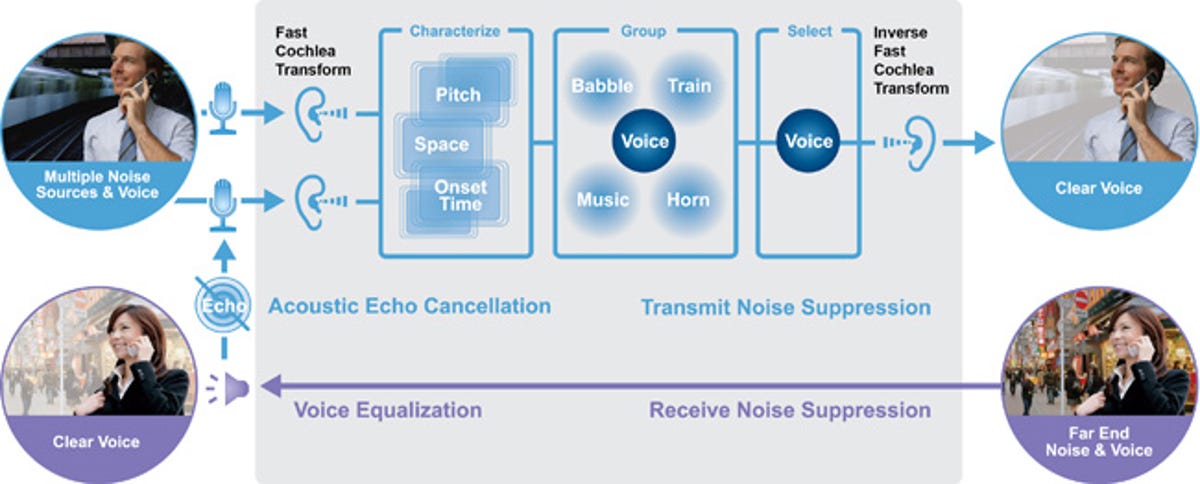Startup Audience currently specializes in improving audio quality for higher-end phones–the iPhone 4 and 4S, most notably–but now it’s going down market.
The company sells small chips that process phones’ microphone signals with technology it calls EarSmart designed to identify the person speaking and filter out everything else. It’s good for voice calls, obviously, but also for newer uses, such as issuing voice commands to a phone, videoconferencing, or capturing the soundtrack for a video.
Audiences’s technology reproduces audio signal processing that humans use–processing that relies on our having two ears and therefore that works on higher-end phones with dual microphones. But at the Mobile World Congress show today, the company plans to announce a new chip, the eS110, for single-microphone phones.


Audience
The technology isn’t as good as what dual-mic phones can produce, but it’s much better than nothing in budget handsets, said Andy Keane, Audience’s newly appointed vice president of marketing and previously the leader of Nvidia’s Tesla supercomputing work.
It’s also better than existing noise suppression systems, he said, because it’s able to screen out more than just constant “stationary” noises such as background hums and road traffic.
“This is the first device that has nonstationary noise suppression,” Keane said. “If somebody is talking beside you, that conversation is just eliminated.”
Audience is billing the chip as a better investment than a second microphone or a fancier case for lower-end phones.
“As feature phones ramp down in countries adopting smartphones, they’re quickly ramping up in the emerging economies,” Keane said. Revenue growth is important for Audience–it filed paperwork in January to hold an initial public offering of its stock.
Keane wouldn’t detail pricing, but he called the chips “very affordable” and argued that phone makers will enjoy being able to boast of better call quality, especially in noisy areas such as urban India and China. It’s priced so that it could reach all the way to the bottom of Nokia’s product line, he said.
The chip itself measures 3.5×3.5mm. Audience plans to release preproduction prototype samples to customers in March, Keane said, so consumers should see the chips in phones before the end of the year.


Audience



